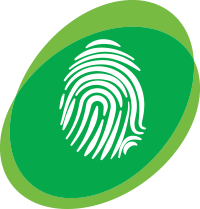Identifying the source of handwriting is an important application in the field of forensic science that addresses questioned document evidence found in criminal cases and civil litigation. It is difficult, given the idiosyncrasies of a person’s handwriting, to recognize the exact writer of a piece of handwriting based only on its physical properties. Even more so is trying to classify a writer without any prior database containing handwriting characteristics of such writer. Data sets containing handwriting samples from different sources are used to investigate how well a convolutional neural network can classify writers from unseen sources. Comparisons between scenarios modeled after real-world situations with varying degrees of complexity, which are adjusted by whether and from which source the samples from the suspects have been collected to train the model, are made to examine the extent to which twin convolutional neural networks can successfully classify similar and different writers. This presentation primarily aims to compare data processing and modeling methods to improve classification on whether two pieces of handwriting are from the same or different writers, in the context where every potential writer has never been seen before. The structure of a twin convolutional neural network allows such comparisons between two images by passing them through identical convolutional neural networks and defining a metric that merges their outputted feature vectors to obtain a similarity score. As model limitations in this presentation are driven by memory and available data, various pre-processing and sampling methods are compared to maximize classification accuracy. On this optimized data set, a custom model that is developed for this analysis is shown to outperform various top-performing architectures in image classification problems with a classification accuracy of 85.5 percent on a test set with similar structure to the training set and 82.8 percent on a data set collected from a different database. Results show that as long as a large-enough number of samples are available to train the model, comparisons between the writers of questioned documents can be classified with over 80 percent accuracy.
Twin Convolutional Neural Networks to Classify Writers Using Handwriting Data

Conference/Workshop:
American Association of Forensic Sciences (AAFS)
American Association of Forensic Sciences (AAFS)
Published: 2023
Primary Author: Pilhyun (Andrew) Lim
Secondary Authors: Danica Ommen
Type: Poster
Related Resources
Source Camera Identification with Multi-Camera Smartphones
An overview of source camera identification on multi-camera smartphones, and introduction to the new CSAFE multi-camera smartphone image database, and a summary of recent results on the iPhone 14 Pro’s.
An alternative statistical framework for measuring proficiency
Item Response Theory, a class of statistical methods used prominently in educational testing, can be used to measure LPE proficiency in annual tests or research studies, while simultaneously accounting for…
Examiner variability in pattern evidence: proficiency, inconclusive tendency, and reporting styles
The current approach to characterizing uncertainty in pattern evidence disciplines has focused on error rate studies, which provide aggregated error rates over many examiners and pieces of evidence. However, decisions…
Statistical Interpretation and Reporting of Fingerprint Evidence: FRStat Introduction and Overview
The FRStat is a tool designed to help quantify the strength of fingerprint evidence. Following lengthy development and validation with assistance from CSAFE and NIST, in 2017 the FRStat was…


